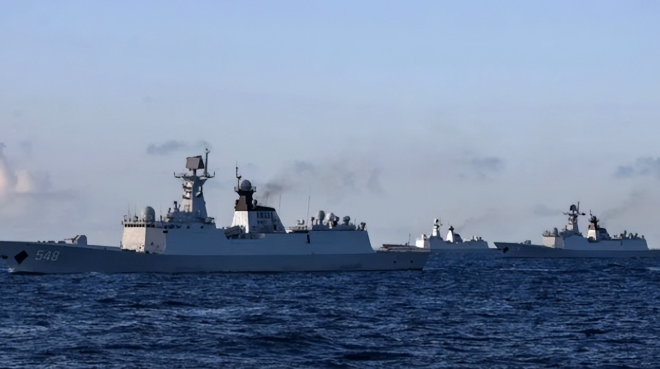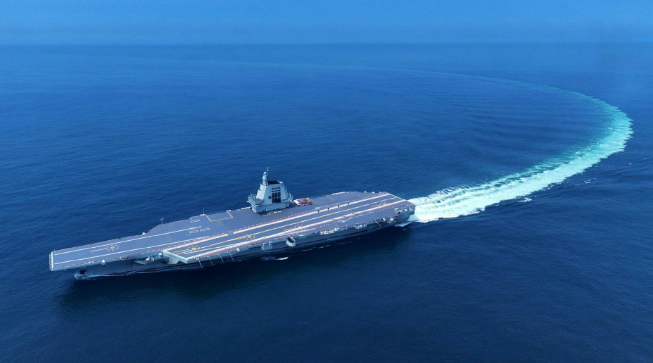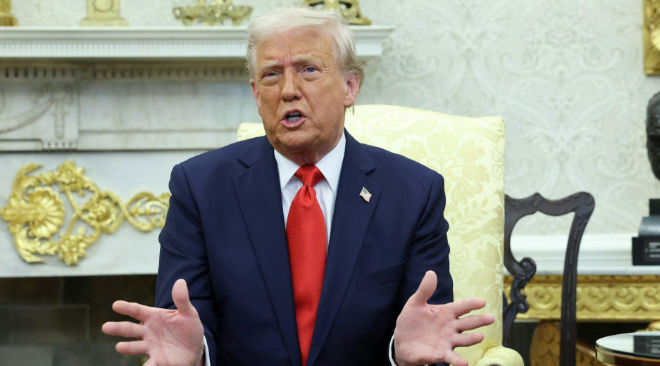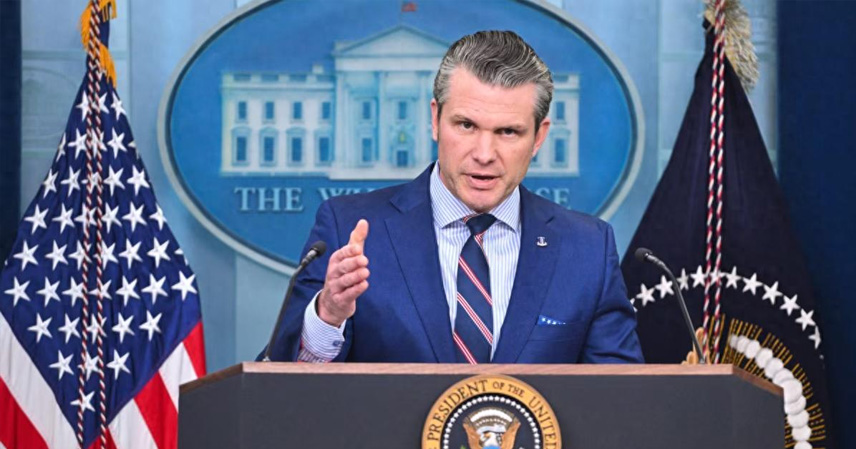In recent days, Chinese Defense Minister Dong Jun held a video call with U.S. Defense Secretary Hegseth, followed by a September 10 phone call between Chinese Foreign Minister Wang Yi and U.S. Secretary of State Marco Rubio. These back-to-back high-level exchanges were widely seen as efforts to stabilize bilateral ties and pave the way for a possible leaders’ meeting.
Optimism briefly grew, especially after both countries extended their tariff truce, suggesting that diplomacy might bring a pause to tensions.
Yet less than 48 hours later, that optimism was tested. On September 12, the PLA’s Eastern Theater Command reported that the U.S. Navy destroyer USS Higgins and the U.K. Royal Navy frigate HMS Richmond jointly transited the Taiwan Strait in a high-profile passage described as “deliberately provocative.” In response, the PLA deployed air and naval forces to track, monitor, and issue warnings throughout the operation.

Words vs. Actions
U.S. warships transiting the Taiwan Strait is not new, but Britain’s involvement added symbolic weight. The real issue, however, was timing: the passage came right after two days of direct China-U.S. dialogue.
This sequence highlighted Washington’s contradictory approach—talking peace while flexing military muscle. Beijing has repeatedly stated its position:
- Unification is inevitable and foreign interference is unacceptable.
- Dialogue can continue, but only if the U.S. acts consistently with its words.
As Defense Minister Dong emphasized, the bottom line is “no conflict, no confrontation.” But Washington’s dual-track behavior—calling for stability while sending warships—undermines its own credibility.

PLA’s Countermeasures
The PLA’s response came in two parts:
- Full tracking and monitoring of U.S. and U.K. vessels to ensure they did not disrupt regional stability.
- Deployment of the Fujian aircraft carrier, which on September 12 successfully sailed through the Taiwan Strait en route to the South China Sea for further testing and training.
The timing of the Fujian’s voyage is particularly significant. Unlike China’s earlier carriers, the Fujian is the country’s first indigenously designed, electromagnetic-catapult carrier, with a displacement of over 80,000 tons. Analysts say this cross-sea exercise tested the carrier’s long-range operational capability ahead of official commissioning.

Symbolism of Two Contrasting Moves
Placed side by side, the contrast is striking:
- The U.S. and U.K. conduct symbolic transits to signal presence.
- China, meanwhile, demonstrates real progress in naval power with the Fujian, moving closer to entering a “three-carrier era.”
Once the Fujian joins the fleet, alongside the Liaoning and Shandong, the PLA Navy will see a qualitative leap in its ability to sustain operations and maintain continuous deterrence.
Conclusion
As global geopolitics shift, U.S.-China relations remain under strain. Beijing has made clear: it welcomes dialogue, but not while foreign navies attempt to show force at its doorstep.
In the end, the question of whether bilateral ties stabilize depends less on words exchanged over phone lines, and more on whether Washington can match its rhetoric with consistent action. Until then, the PLA’s message is unambiguous: China has both the resolve and the capability to defend its sovereignty.
References
- PLA Eastern Theater Command Spokesperson Senior Colonel Shi Yi, Sept 12, 2025
- Chinese Ministry of National Defense and Ministry of Foreign Affairs briefings, Sept 2025
- U.S. Department of Defense press release, Sept 12, 2025
- Open-source naval tracking reports



